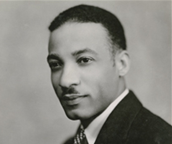The Mystical Origins of “Ezekiel Saw de Wheel”
“Ezekiel Saw de Wheel” is one of the most dynamic and enduring of all African-American spirituals. Like many songs of its genre, it has no single, known author and originated on the plantation complexes of the American South sometime in the early to mid-19th century. Its powerful imagery and message of hope and divine intervention made it a cornerstone of Black American folk hymnody, serving as both a rallying cry and an expression of profound faith during the era of enslavement.
The Biblical Source: A Vision of Divine Power
The entire spiritual is a lyrical interpretation of a highly complex and vivid passage from the Old Testament Book of Ezekiel, Chapter 1. The prophet Ezekiel, writing while in exile in Babylon, describes an astonishing vision of God’s mobile throne-chariot.
The core of the vision is a description of four living creatures, each accompanied by a miraculous mechanism:
“The appearance of the wheels and their workmanship was like sparkling beryl, and all four of them had the same form, their appearance and workmanship being as if one wheel were within another.”
(Ezekiel 1:16, NASB)
This description of the “wheel in the middle of a wheel”—a representation of God’s omnipotence, omnipresence, and purposeful movement—was immediately compelling to enslaved Africans. It provided a powerful metaphor for God’s mysterious yet certain power to move anywhere and enact judgment and deliverance.
The Interpretation in Slavery
The enslaved people drew deep meaning from Ezekiel’s vision, seeing parallels between their own captivity and the Babylonian exile of the Israelites. The abstract, awe-inspiring image of the wheel and the chariot was translated into a more tangible symbol of freedom and transportation to glory.
The lyrics of the spiritual transform Ezekiel’s incomprehensible vision into an accessible theology of grace and divine justice:
- “Ezekiel saw de wheel / Way up in the middle of the air” announces the majestic, otherworldly source of power.
- The lines “And the big wheel run by Faith, good Lord; And the little wheel run by the Grace of God” are an interpolation not found in the biblical text, but they articulate the key theological elements for the singers. It’s a profound spiritual equation: the larger work of the Lord is powered by the singers’ Faith, and that work is guided by God’s unmerited favor, Grace. The combination of these two forces in one divine mechanism provided assurance that their deliverance was an inevitability decreed and driven by God.
The spiritual thus became an encoded narrative: a message of judgment for the oppressor and a promise of freedom for the oppressed, reminding them that while the earthly system of slavery was unjust, a higher, more powerful system was in motion.
Popularization and Concert Arrangements
The spiritual, which had circulated orally among the enslaved communities, gained widespread recognition in the post-Civil War era. Its popularization is primarily attributed to the Fisk Jubilee Singers, a group formed in 1871 at Fisk University (a historically Black college). They toured nationally and internationally, performing spirituals—the “slave songs”—to raise money for the university. The Fisk Jubilee Singers introduced this sacred music to a global audience, forever cementing its place in the American and world music canon.
Later in the 20th century, the song became a staple in the repertoire of African-American composers and arrangers who transformed the simple folk melody into complex “concert spirituals.” Notable arrangements include those by:
- William L. Dawson (1899–1990), whose powerful choral arrangement is one of the most performed versions.
- Harry T. Burleigh (1866–1949), a key figure in bringing spirituals to the concert stage.
- Moses Hogan (1957–2003), whose arrangements are known for their modern harmonic richness.
From the quiet expression of hope on a secluded plantation to the celebrated performances of university choirs, “Ezekiel Saw de Wheel” remains a potent musical monument to faith, perseverance, and the imaginative power of sacred song.
Related
Sorry, no records were found. Please adjust your search criteria and try again.
Sorry, unable to load the Maps API.
